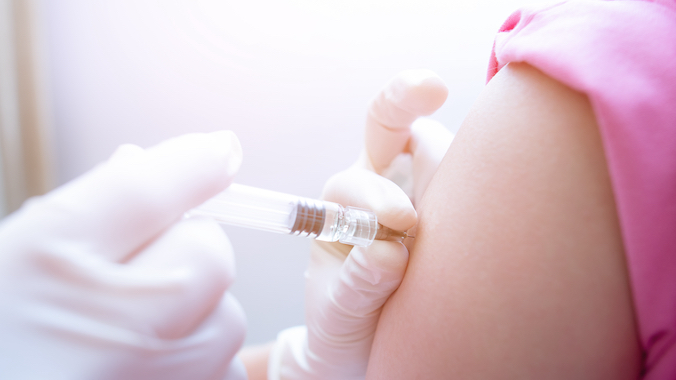U.K. Study on Cervical Cancer Confirms: Vaccines Are Incredible
Photo by ravipat/Shutterstock
Vaccines remain awesome. Such is the take-home from a U.K.-based study out on Wednesday in the British Medical Journal, which found that vaccination against human papillomavirus can dramatically reduce the risk of cervical cancer. And critically, it found that reduction stretches across socioeconomic groups.
“Historically, cervical cancer has had greater health inequalities than almost any other cancer and there was concern that HPV vaccination may not reach those at greatest risk,” said lead author Peter Sasieni, of Queen Mary University in London, according to a press release. “Instead, this study captures the huge success of the school-based vaccination program in helping to close these gaps and reach people from even the most deprived communities.”
The new study found that HPV vaccination offered at age 12-13 reduced the incidence of cervical cancer by 83.9 percent. For grade 3 cervical intraepithelial neoplasia, a type of pre-cancerous lesion that can lead to cervical cancer, the reduction was 94.3 percent. The highest rates of cancer are still found in more impoverished areas, but the reductions thanks to vaccination were seen across the board.
This is not new, of course; study after study has shown that HPV vaccination is an incredibly effective tool. Like the 2020 study in Sweden which found that vaccination cut the risk by 88 percent when administered before the age of 17 (and still by over 50 percent when vaccinated after that age), or the Scottish study from earlier this year that found zero cases — zero! — among women born between 1988 and 1996 and vaccinated at age 12-13.
The depressing bit is that all this evidence piling up has yet to push HPV vaccination numbers to where they should be. In the U.S. in 2022, only 37.8 percent of children aged 9-17 had received at least one dose, according to the CDC. In the E.U. the overall coverage rate is likely about 32 percent, though different countries vary widely, and some have reached as high as 90 percent. Japan has a particularly low rate, according to 2021 research. The U.K.’s rates vary by region and age but are higher, inching into the 70 percent range.
The World Health Organization has set a goal of achieving a 90 percent vaccination rate for girls by the age of 15, a strategy that when mixed with better screening could reduce cervical cancer rates by 97 percent within 100 years, eliminating 74 million new cases of cancer. The deaths averted would reach 300,000 by the end of this decade, and 14 million by 2070.
Sasieni said that the elimination of cervical cancer as a public health issue in our lifetimes is an achievable goal. Vaccines rock.